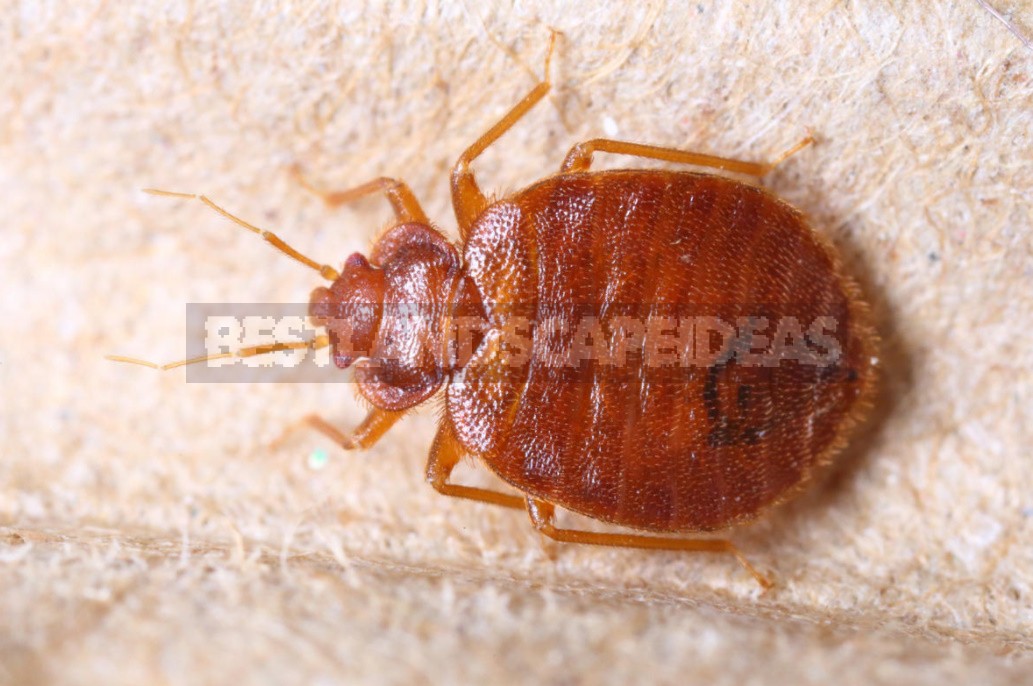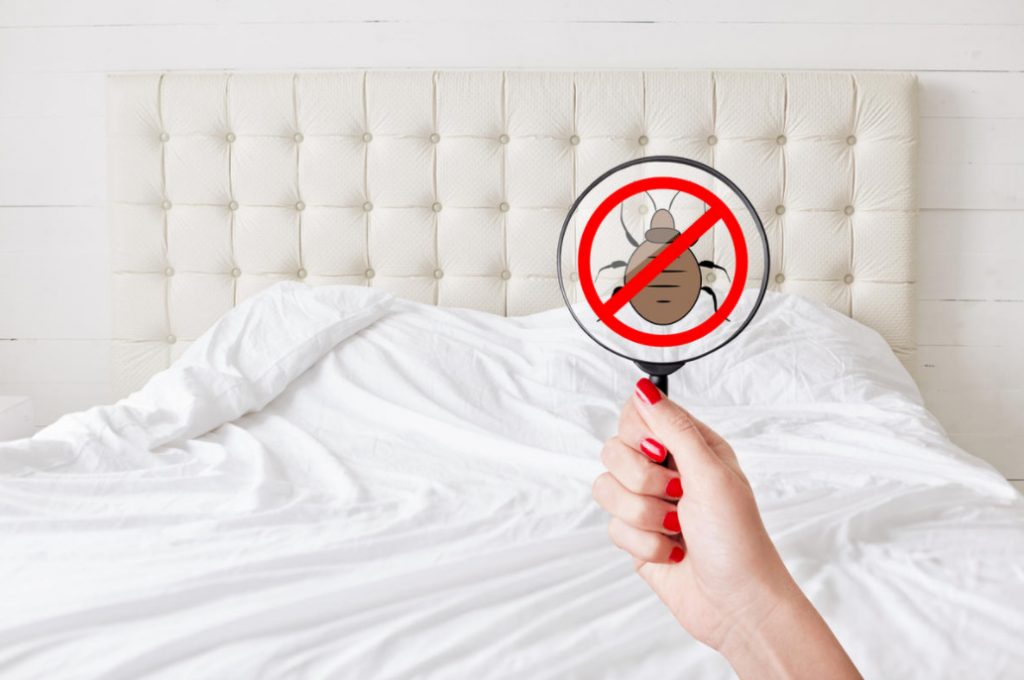If you think that your house will definitely never have bedbugs, we can assure you that this is a moot point. No one is 100% immune from the visit of uninvited guests. And getting rid of them is not easy, but it is possible.
What kind of bugs live in the house
Most often in the house you can find a bed bug (Cimex lectularius), or home. This species is well adapted to the conditions of human habitation, regardless of its sanitary condition. Bedbugs can live in conditions of sterile cleanliness, and in dirty cluttered rooms — they do not care, as long as there is a source of food, blood. The appearance of other species in the house is extremely rare.
Bed bug
On average, the bedbug seems to live for a short time, 12-14 months. But this is one individual. And they form colonies very quickly: for such a short life, the female can lay 250-500 eggs, which in 30-40 days become imago-adults capable of reproduction. It is not difficult to imagine what the house will become in a few months, if you do not take decisive measures against them. The food diet of bedbugs consists exclusively of blood — they prefer human blood. If they can’t get it for some reason, they attack warm-blooded animals — Pets, mice, rats, and birds. They are nocturnal, hiding in nooks and crannies during the day, usually not far from the bed.

What are the dangers of bed bugs Insecticide
Allergy. Depending on individual susceptibility, the reaction can be of varying severity from skin rash and runny nose to bronchospasm and anaphylactic shock. Moreover, direct contact with the insect is not required, it is enough to touch the shells or excrement discarded after molting (even crushed to dust) or inhale their smallest particles.
A variety of diseases. In the body and waste products of bedbugs, many pathogens of severe diseases were found — typhoid and plague, hepatitis B and leprosy, syphilis and tuberculosis, tularemia and brucellosis, smallpox and anthrax. Not a single fact of infection by a bug bite has been documented, but there is no reason for optimism. The air of our homes seems clear and clean, but in every 1 m³, invisible to the naked eye, there are 200-300 mg of the smallest particles of household dust, including infected products of bedbugs. When breathing, all this “good” gets into the body — and whether the immune system can cope with such a formidable opponent is unknown.

No less dangerous is the ingress of such dust on open wounds (even micro-scratches — an open gate for infection). There is no evidence that bedbugs carry the immunodeficiency virus. However, no one has taken the liberty to say otherwise, so the question remains open.
Problems of a psychological nature. If a person does not have the opportunity to sleep properly, he becomes irritable, absent-minded, aggressive. A week or two will pass, and sleepless nights will lead to stress, and this is not the worst. Many people are unable to control the panic attacks that arise from the mere thought that there are insects in the room. And if you add to this the fear of being bitten and infected, insectophobia is just around the corner. It is worth noting that getting a phobia is much easier and faster than getting rid of it.

How do bedbugs get into the house
Unfortunately, there is nothing to please you: no one is immune from the appearance of uninvited guests. To help you understand how easily bedbugs can get into your home, here are some examples.
- Hotels, trains, planes, saunas, cafes, cinemas — in any of these places you can wait for a starving bug that fell from the clothes of the former owner.
- Furniture, books, household appliances, clothes bought with hands.
- From a neighboring apartment, especially if its owners went on vacation or decided to get rid of insects in a radical way-with powerful insecticides.
- From dry cleaning or Laundry, if there are clean and dirty things lying nearby (there were precedents).
- With Pets: occasionally bedbugs “move” on cats and dogs.

Where do bed bugs hide
Usually they do not go far from the feeding area, so look for them near sleeping places — beds, sofas. A favorite place is the creases and seams of the mattress, especially on the lower side. They are very respectful of bedbugs and upholstered furniture: there are many secluded places where they feel safe. They often gather in groups under wall and floor carpets, under Wallpaper, behind baseboards, in the far dark corners of nightstands and dressers. In General, everything that is near the bed can become their shelter, including books, household appliances, and even electrical outlets.
The main thing is to choose a reliable, effective tool. For example, a spray with chamomile extract will quickly and effectively destroy not only bedbugs, but also fleas, flies, cockroaches and ants in residential and non-residential areas. It smells quite nice, is very convenient to use (a good sprayer) and is economical.

















